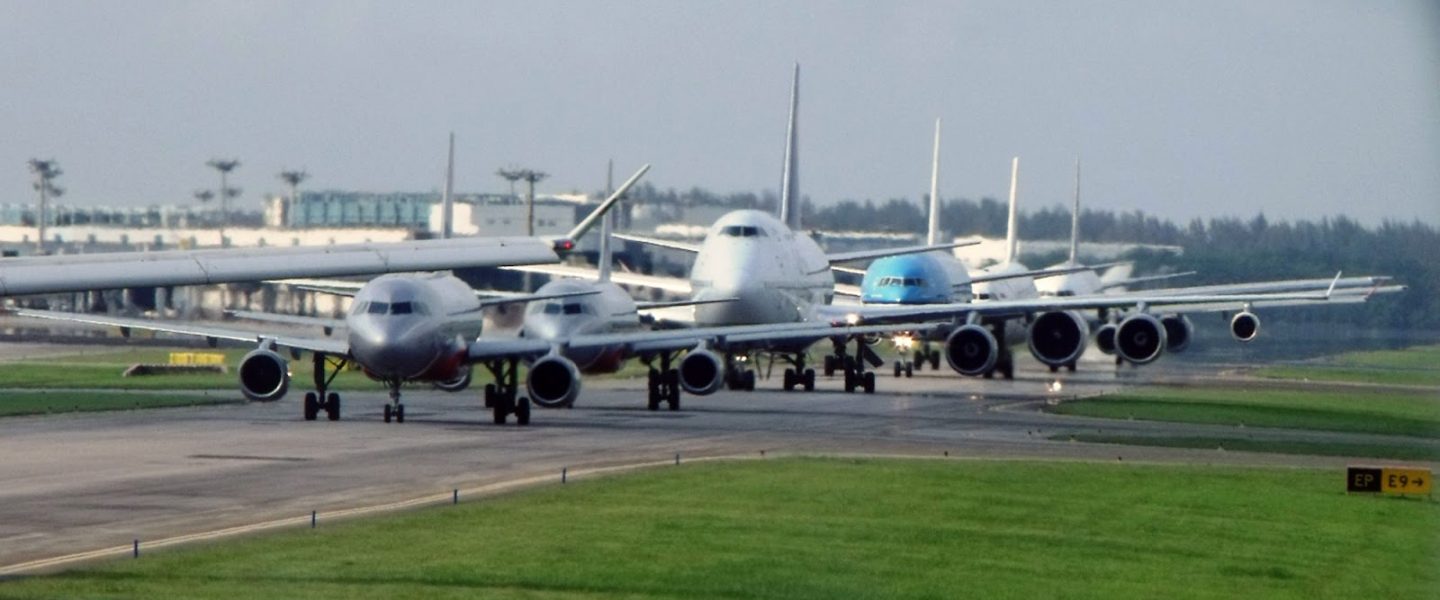Tourism is poised to consume a troubling 40 percent of the world’s remaining 1.5 C carbon budget by mid-century.
|
Listen To This Story
|
Tourism is projected to make up nearly 12 percent of the global economy by 2033, but it is also poised to consume a troubling 40 percent of the world’s remaining 1.5 C carbon budget by mid-century, highlighting what experts describe as “industry dishonesty” in efforts to reduce emissions in line with other sectors.
Meanwhile, the very communities meant to benefit from a tourism boom have been grappling with record-breaking summer heat, their landscapes charred by wildfires as global heating alters ecosystems and drives extreme weather at beloved destinations.
And while many of the most severe and compelling stories of this year’s tourist season come from the United States and overseas, Canadian destinations have not been immune to the impacts.
The consequences were fatal in Lāhainā, Hawai’i — a town revered by locals and visitors alike for its historical significance — which was incinerated when dry conditions intensified wildfires in August. The death toll stands at 115 people, with 385 still missing, according to the Federal Bureau of Investigation. Police say 110 missing person reports have been filed, The Independent reports.
Just weeks earlier, approximately 19,000 people, including numerous British tourists, had to be evacuated when wildfires tore across the Greek islands of Rhodes and Corfu. No private citizens were killed, but two air force pilots died when their water bomber crashed off Evia island. Earlier in July, an unprecedented heat wave disrupted daily life in Athens, leading authorities to close the Acropolis, including one of its iconic temples, the Parthenon.
‘Tectonic’ Shift in Tourist Traffic
The searing temperatures experienced by Greece — and Italy, Spain, and Germany — are a grim harbinger of things to come for Europe at large. “Madrid’s climate in 2050 will resemble the north African city of Marrakesh; London will be more like Barcelona and Stockholm like Budapest,” Bloomberg writes, citing a 2019 report by the Crowther Lab in Zurich.
Those climate transformations will produce a “a tectonic shift for Europe’s travel and tourism industry, which contributed €1.9 trillion ($2.0 trillion) to the regional economy last year, and remap travel patterns in a way that will likely deal a blow to some countries in southern Europe.”
Such remapping has already begun, suggests Reuters, citing data from a European Travel Commission report. “The number of people hoping to travel to the Mediterranean region in June to November has already fallen 10% compared with last year, when scorching weather led to droughts and wildfires.” Traditionally cooler countries like Denmark and Ireland have meanwhile seen “a spike in interest.”
On a sweltering July day in Rome, American tourists gave the thumbs down to future summer travel to the Italian capital, saying they would consider trips in the spring instead.
The shift to travel during cooler months could end up being a silver lining for Greece — where tourism made up a whopping 22 percent of GDP in 2022. International air arrivals to the country were up 87.5 percent year-on-year between January and March, and tourist hotspots like Mykonos were overrun with cruise ship visitors this summer.
Local Communities Pivot
With neither the space nor infrastructure to handle the influx of thousands of tourists aboard hundreds of cruise ships docking at its small port, Mykonos island neared its breaking point in June, reported Greek City News. A staggering 895 cruise ships were expected to visit Mykonos and the nearby island of Delos over the summer — a big jump from the 608 ships that docked there last year.
“The sheer volume of people overwhelms the island,” wrote Greek City News at the time. “Without proper measures in place, the allure of these breathtaking destinations may be overshadowed by the negative consequences of over-tourism.”
A similar dynamic is taking shape for the climate community. Belem, situated at the mouth of the Amazon River in Brazil, is facing an influx of 70,000 delegates attending an upcoming United Nations climate summit, COP 30, in 2025. The port city plans to triple hotel capacity and use boats and cruise ships to house delegates.
“The boats can sail away when the climate meeting is finished, but what would Belem do with all of those extra hotel rooms it is getting ready?” asks Skift Executive Editor Dennis Schaal in a recent opinion piece. Presumably, they will be useless to locals — unless they are able to profit from continued tourism in a region where conservation efforts and development must strike a careful and crucial balance.
In Amsterdam, locals have said “Enough!” to cruise ships docking at its ports. Supporters of a city council move to ban the ships in July told Bloomberg the planet-trashing vessels were a direct affront to the city’s sustainability efforts.
Amsterdam’s decision to prioritize sustainability — and quality of life for its residents — over tourist dollars comes two years after Venice banned cruise ships from sailing directly into the city in a desperate effort to protect its fragile lagoon.
Such moves are evidence of the “ascendance of communities” — a key market trend that finds cities and regions deciding that “pure growth in visitation can no longer be the primordial goal,” stated a 2021 Destination Canada report. “The shift in focus towards the well-being and safety of local communities — urban, rural, and Indigenous — has taken on new urgency.”
But even as this locals-first approach takes shape, the climate crisis is forcing communities to reinvent themselves to stay afloat. In British Columbia, the Okanagan’s legendary wine industry is making desperate pivots after back-to-back extreme weather events damaged crops, reports The Globe and Mail. Vineyards hiked their prices for wine tastings to raise revenue, but then a ban on tourists using hotels — to accommodate evacuees fleeing wildfires — eliminated the possibility of big group bookings and destination weddings. Larger wineries will likely survive the very lean year, but smaller family-owned businesses are sure to be hurt, said Trina Plamondon, a Vancouver-based wine consultant.
A similar narrative unfolded in Tofino, on Vancouver Island, as wildfires near the popular surfing village severed a crucial highway link. Countless tourist-dependent businesses teetered on the brink, with only those catering to affluent clientele standing to survive the poor season. Wickaninnish Inn managing director Charles McDiarmid told BNN Bloomberg at the time that bookings were down about 50 percent overall, but some of their guests who had planned to drive were open to flying instead. The location would be “beautiful and sunny for those that do make it through,” he added.
Big Business, Colossal Footprint
The World Travel & Tourism Council (WTTC) appears to prefer rose-colored glasses in the face of climate disruption — predicting major growth for the sector, with international travel “firmly back on track” after the COVID-19 pandemic. Travel and tourism added $7.7 trillion to global GDP in 2022, and the WTTC forecasts that figure doubling to represent 11.6 percent of the global economy by 2033, with nearly 12 percent of the world’s working population employed in the sector.
While the WTTC’s net-zero roadmap commits to halve tourism-based travel emissions this decade, the council admits the most likely scenario is a 25 percent increase by 2030 — the deadline set by the Intergovernmental Panel on Climate Change to reduce across-the-board global emissions by 45 percent.
“Without worldwide policy efforts at the national scale to manage the sector’s emissions, tourism will turn into one of the major drivers of climate change,” writes renowned sustainable tourism expert Stefan Gössling in a paper published in the journal Tourism Management. The industry is on track to deplete the world’s remaining 1.5 C carbon budget by 40 percent and its 2 C budget by 22.2 percent, with road and air transport making up the bulk of emissions, found the Swedish researcher and his team.
“The paradox of continued growth expectations and simultaneous hopes to see very significant emission reductions is evident in all industry documents,” warn Gössling and his colleagues. By its own projections, the aviation industry will at least triple its fuel use and double its emissions in the period between 2020 and 2050, while deploying (often “worthless”) carbon offsets and “currently not existing technologies” to compensate, the authors write. These contradictions mirror “a lack of viability and reliability” that runs throughout the sector, they add, in a paper that cites a lack of governance and “industry dishonesty” as persistent roadblocks to decarbonizing.
No Data, No Plans
Gössling’s analysis comes a year after a Canadian-led team of geographers found the state of climate and tourism research in North America to be limited. The majority of studies focus on the threats facing winter sports tourism, with very little data on climate impacts like extreme heat, wildfire, insect outbreaks, sea level rise, coral bleaching, and toxic algae blooms in lakes.
University of Waterloo geographer Michelle Rutty and her colleagues likewise found scant research on the need to decarbonize tourism and potential routes to make it happen.
The team found no national or regional climate plans in Canada, Mexico, or the United States with milestones or specific actions for the tourism sector to reduce emissions in line with a 2050 net-zero target.
In Canada, despite persistent federal promises to deliver more ambitious emission reductions across the economy, the Pan Canadian Framework on Climate Change does not address travel or tourism at all.
Rutty and her colleagues touch briefly on nascent variants of tourism that might be kinder to the planet. They include:
- Steady-state tourism that aims to minimize the negative environmental, social, and cultural impacts of tourism;
- De-growth tourism, where production and consumption are reduced yet welfare or well-being improves through a focus on quality over quantity;
- Regenerative tourism that provides more for the environment and community than it takes from them; and
- Slow tourism, or traveling at a leisurely pace “to allow a deep and authentic experience.”
But appealing as the concept may sound, long periods of slow-paced travel are unlikely to be possible for the working majority. Furthermore, in an era where countless people are compelled to traverse great distances in search of safe harbor from climate-induced crises, celebrating “slow tourism” takes on a more complex dimension — especially given the proliferation of border walls, fences, and hostile attitudes that hinder the movement of refugees.
Tourism Intersects With ‘Trespass’
In late August, at least 21 people, widely presumed to be asylum seekers, burned to death in an out-of-control wildfire in the Evros region of Greece, a popular tourist destination on the border with Turkey. Euronews reports that citizen vigilantes have been hunting down, capturing, and terrorizing migrants, claiming they are responsible for the wildfires ravaging the region — despite confirmation they were sparked by lightning.
Adding to the irony, the Evros fence — a five-meter-tall (16.4 feet), stainless steel, anti-migrant measure that runs 27 kilometers (16.8 miles) along the border of Greece and Turkey — has now become a major tourist attraction, local news outlets report.
“We have been impressed by the fact that in our professional discussions or communications with the travel agencies and tourist agents of Athens and Thessaloniki, even the top ones, they raise the issue of visiting and guiding the tourists who come through Evros, to the new fence,” a representative of one of the major tourist offices in Athens told Evros-news-gr. There are some permit issues they added, “but a solution should be found and the opportunity given to make a place visitable. Why not?”
Those seeking a bigger thrill than gawking at a fence might want to try a jaunt through the notorious Darien Gap in Panama — a treacherous passage for those seeking entry into the US through the Americas, reports Reuters. Hiring an “adventure tourism” guide will ensure a “deep and authentic experience” without ever crossing paths with the tens of thousands of migrants who move north through Gap each year — fleeing climate-aggravated calamities in search of a safe place to call home.
This story by Gaye Taylor was originally published by The Energy Mix and is part of Covering Climate Now, a global journalism collaboration strengthening coverage of the climate story.





